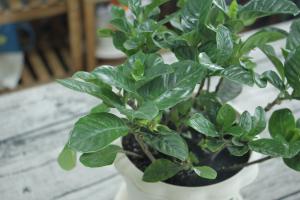How Many Pine Trees Can Be Planted per Acre?
Planting pine trees is a great way to improve the environment, create a natural habitat for wildlife, and generate revenue for landowners. However, to maximize the benefits of planting pines, it is essential to know how many trees can be planted per acre. In this article, we will explore the factors that determine pine tree density per acre and give an overview of the common planting methods.
Finding the Optimal Pine Tree Density per Acre
The optimal pine tree density per acre depends on several factors, including the species of the pine trees, the climate, the soil type, and the intended use of the land. Pine trees are typically grown in plantations, and the goal is to achieve the highest possible yield of high-quality timber. However, the optimal density may vary depending on the end use of the timber.
For instance, if the timber is intended for sawmills that produce lumber, a higher density of pines per acre may be desirable. In contrast, if the timber is intended for pulp and paper mills, a lower-density plantation may be more appropriate. The optimal pine tree density per acre for high-grade timber production ranges from 400 to 700 trees per acre, while for pulp and paper production, 200 to 400 trees per acre are preferred.
Factors that Determine Pine Tree Density per Acre
The species of the pine trees is an essential factor that determines the optimal density per acre. Some pine species, such as longleaf pine, have slower growth rates than others, and thus a lower density of trees per acre may be preferred. In contrast, faster-growing species, such as loblolly pine, can tolerate higher densities per acre, up to 700 trees per acre.
The site conditions, such as soil type, drainage, and topography, also affect the optimal density of pine trees per acre. Soil type is especially critical, as it directly impacts the tree's ability to grow and produce quality timber. Sandy loam soils are preferred for pine tree plantations, as they promote good drainage and allow for better root development. In contrast, poorly drained soils or sites with shallow bedrock may require lower planting densities.
Finally, climate is also an important factor that affects the optimal density of pine trees per acre. For example, in areas with hot and dry summers, the optimal planting density may be lower than in areas with cooler, wetter climates. Higher planting densities can lead to increased competition among trees for limited water and nutrients, resulting in lower growth rates and reduced timber quality.
Common Planting Methods for Pine Trees
There are several common planting methods for pine trees, including seedling planting, container planting, and direct seeding. Seedling planting is the most common method, as it is a cost-effective way to establish a pine forest quickly. Seedlings are typically planted in rows using a mechanical planting machine at a spacing of 8 to 12 feet between rows and 4 to 6 feet between trees within rows.
Container planting involves planting pine seedlings that are grown in containers, which helps to improve the survival and growth rates of the trees. The planting density using this method is typically lower than with seedling planting, as the trees require more space to grow due to the larger root ball in the container.
Direct seeding involves planting pine seeds directly into the ground, without first growing them in seedbeds. This method requires more preparation and care, as the seeds need to be planted at the right depth, moisture, and soil temperature to ensure germination. The planting density using direct seeding is lower than with seedling planting or container planting.
Conclusion
The optimal pine tree density per acre depends on several factors, including the species of the pine trees, the soil type, the climate, and the intended use of the timber. Planting pine trees is a great way to improve the environment, create a natural habitat for wildlife, and generate revenue for landowners. By understanding the factors that determine pine tree density per acre and the common planting methods, landowners can make informed decisions when establishing pine plantations.

 how many times do yo...
how many times do yo... how many planted tre...
how many planted tre... how many pine trees ...
how many pine trees ... how many pecan trees...
how many pecan trees... how many plants comp...
how many plants comp... how many plants can ...
how many plants can ... how many plants and ...
how many plants and ... how many pepper plan...
how many pepper plan...





























